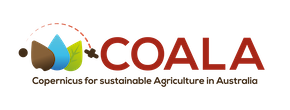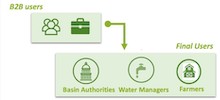- About us
- Project
- Publications
-
Deliverables

D6.4 – Promotional material
December 31, 2020DeliverablesThe aim of the communication materials is to publicise the COALA Project among potential users. This Deliverab...

D6.2: Communication and Disseminati...
December 31, 2020DeliverablesThis Deliverable is an update of the first version of the Communication and Dissemination Plan.

D4.1: Baseline Description of Pilot...
September 30, 2020DeliverablesThis Deliverable describes the pilot experiments of COALA Project. Participatory evaluation of the COALA servi...
- Media Room
-
News

COALA Project: A Success St...
August 20, 2023Blog, Evidenziato, News, Press ReleaseThe COALA Project, a European Union funded project involving a collaborative initiative between the European U...

Workshop on COALA business model
December 19, 2020News
Plenary meeting November 23, 24 and...
December 1, 2020NewsThe plenary meeting of COALA Project has been held on 23rd, 24th and 30 November 2020

Webinar: Governance of Water Scarci...
November 17, 2020NewsThanks to Copernicus data, Europe and Australia launch a new challenge to improve the management of water and ...
- Blog
- Resources
-
- July 8, 2021
- White Research
- Blog
- No Comments
- Farmers
- Irrigation Infrastructure Operators,
- Basin authorities,
- Business users (as intermediaries).
The COALA Business Model: creating a successful model

The COALA Business Model: creating a successful model
A business model can be seen as a holistic framework through which any business is defined, understood, and designed. It allows you to map out how ongoing value for your customers can be created.

The COALA business model
The COALA Business model tries to comprehensively capture the characteristics of and relationships between fundamental “building blocks”. Identifying customer needs and connecting them to COALA activities, resources and key partners is a complex task.
With this in mind, the COALA team turned to some of the most efficient management tools in business modelling techniques. These activities are essential for the future of COALA. Once created, they provide us with a visual overview of the value we create, deliver and capture. This analysis tells us how the key drivers revolving around the business aspects of our project fit together.
The building blocks

Usually, the nine main building blocks guiding this kind of analysis cover both the internal (business) and external (customer) sides. COALA was constructed in the same way.
The internal side includes the key partners, activities, resources, and cost structure. For example, COALA has engaged with key actors like farmers, Irrigation Infrastructure Operator, and national water management authorities. It also includes data management and, of course, the main EO based service data provision.
The key resources within the team range from IT developers to the sales team. Finally, business users (e.g. agribusiness consultants) are an example of the different key partners playing an important role for COALA.
The external / customer centred side includes customer relationships, the channels, and the revenue streams. COALA explores the different needs and perspectives of its customers (Farmers, Irrigation Infrastructure Operators, Authorities and Business Users). Then we underline our offering of personal assistance and automated services. Lastly, we evaluate the most appropriate cloud computing platform and potential revenue streams for our data-as-a-product approach.
Finally, at the centre of the business modelling activity, the team developed our value proposition. This proposition outlines the fundamental concept of the exchange of value between COALA and its customers/end users. The value proposition contains four different levels, the farm level, district level, basin/national level and business user level. This approach reflects our interest in a more detailed analysis of the business environment.
Who are the COALA services for?

We target COALA services to four different sets of customers or end-users.
Each of the target users has its own “job”. A job could include running a profitable farming business or allocating water efficiently, and its costs such as high operational costs or inconsistent monitoring. COALA’s market analysis also identified the user/customer-specific gains. We measuring how they measure the success of a job well done and finally conclude with a value map. The value map describes how COALA services relieve the cost identified.
All this information led us to a preliminary assignment of which services meet the needs of each customer or end/user. We can then package the data offerings accordingly.
To effectively reach out to our target groups, we gathered and analysed the information relative to our four main customer segments and end-users. Then we decided our best options to reach them efficiently. All things considered, the best-suited business model for COALA focuses on leveraging the existing networks in the sector. It then takes advantage of a partnership with business intermediaries who will integrate COALA services in their own (pre-existing) offerings. This kind of partnership relies on providing services through platforms that are already familiar to the users. Familiarity can help reduce risks and costs compared to alternative models.
Why should COALA validate its business model?
As the project unfolds, the business model is built on assumptions and refined with time through the validation process. COALA aims to improve its business model to gain traction in the Australian market through business model validation. We will leverage this to eventually ensure sustainability after the end of the project itself.
The involvement of relevant market actors outside COALA, together with the feedback from the consortium, is fundamental for service uptake. Because we have validated our business models through market research and questionnaires COALA can establish relationships with the stakeholders who want to be involved in this process (for example, in the context of the pilots). These relationships are inherently beneficial. But they will also benefit COALA by opening a channel to capture innovative ideas that could add value to the services we offer and the way we offer them.
A business model strengthened through validation has three main benefits. Firstly, it improves resilience to potential disruption. Secondly, we can attract customers with the right value proposition. Lastly, we make a product that is closer to the customers’ real needs. Finally, through validation, we want to ensure the project’s profitability and, therefore, COALA services on the Australian market in the long term.
In practice, the business model validation will contribute, together with the business plan, to give a clear strategic direction for deploying the services. Considering the Australian and European partners’ roles will improve the communication and commercialisation channels, we will refine how the COALA services will reach the target customers/end users.
The validation process will unfold through co-creation workshops and the feedback channels established in the pilots. These activities are part of the COALA project for several important reasons: we want to ensure continuous alignment with stakeholder needs. We aim to effectively integrate their feedback into the pilot design phase until the project’s successful completion.

















